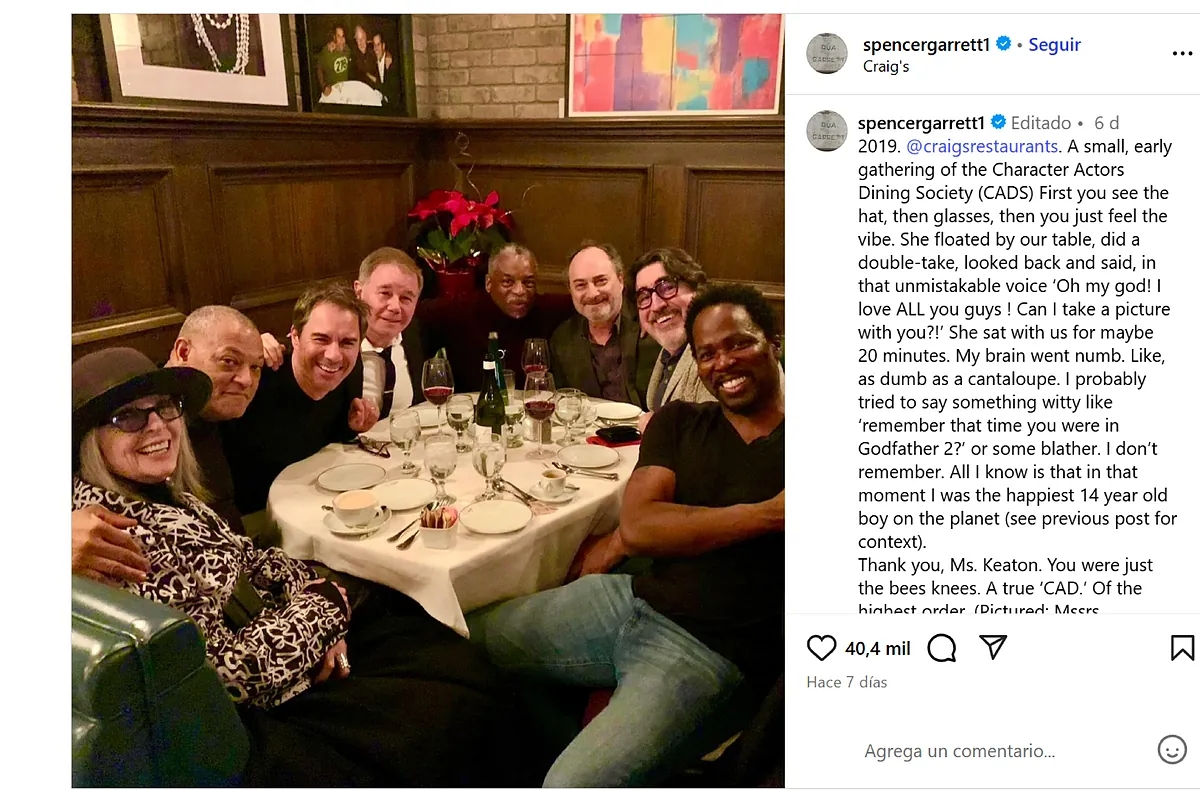Diane Keaton's character

Scrolling through Instagram, I came across a wonderful photograph of an actors' dinner. A gathering of "character actors," it says. In Spanish, this expression is the result of a careless translation: "character actor" is better translated as "actor de personaje." It serves to differentiate performers capable of dissolving into any character from stars, who always consciously and subconsciously bring their own personality to the roles they play.
The character actors in the photo include, among others, Alfred Molina, Eric McCormack, Lawrence Fishburne... and Diane Keaton. She was a star. A superstar. The photo is, therefore, both a celebration and a joke. I saw it shortly after learning of Keaton's death and thought it was a magnificent way to say goodbye. So was Reese Witherspoon recounting her first encounter with her. Keaton was fascinated by Reese's attitude and accent (both Southern) and told her so with as much cheek as warmth. Witherspoon was 15 at the time. Meryl Streep described her as "the most covered-up woman in the history of clothing" at a tribute. Diane, in the stalls, wore one of her signature hats. In Annie Hall , she dressed as herself, back when dressing as Diane Keaton still meant nothing. "Let her wear what she wants," said Woody Allen. The rest is history.
I'm stealing the phrase from journalist Anabel Vázquez: "friendly eccentricity." Also: charisma, personality, photogenicity, authority, stardom. The nun she played in The Young Pope , with just a pair of sunglasses, was more Diane Keaton than anything else. Paolo Sorrentino , the series' creator, knew it. Just as Edward Berger knew that no matter how "nun-ified" Isabella Rossellini appeared in his Conclave , there would be more of a star in that character than a character actress. It worked, oh yes it did. Julia Roberts also works in Witch Hunt . This new film by Luca Guadagnino is one of the most aggressive fictions of recent times. Watching it is like scratching your nails on a blackboard. For more than two hours. Or like running your tongue over the gap, somewhere between sore and numb, of a recently extracted tooth. For more than two hours.
Roberts' presence in the squeaky, jerky web that is Witch Hunt is as important as Nora Garrett 's script (her first) or Guadagnino's direction. Because Julia, like Diane, means things. And almost none of them are in Witch Hunt . There, even her smile, that smile that has lit up the world since 1988, is violent. The film wants to be upsetting, and it succeeds. It would only be more uncomfortable to watch if Diane Keaton were on screen instead of Julia Roberts. Although that might have been too much. It would have been like watching ET dismember a puppy.
elmundo




